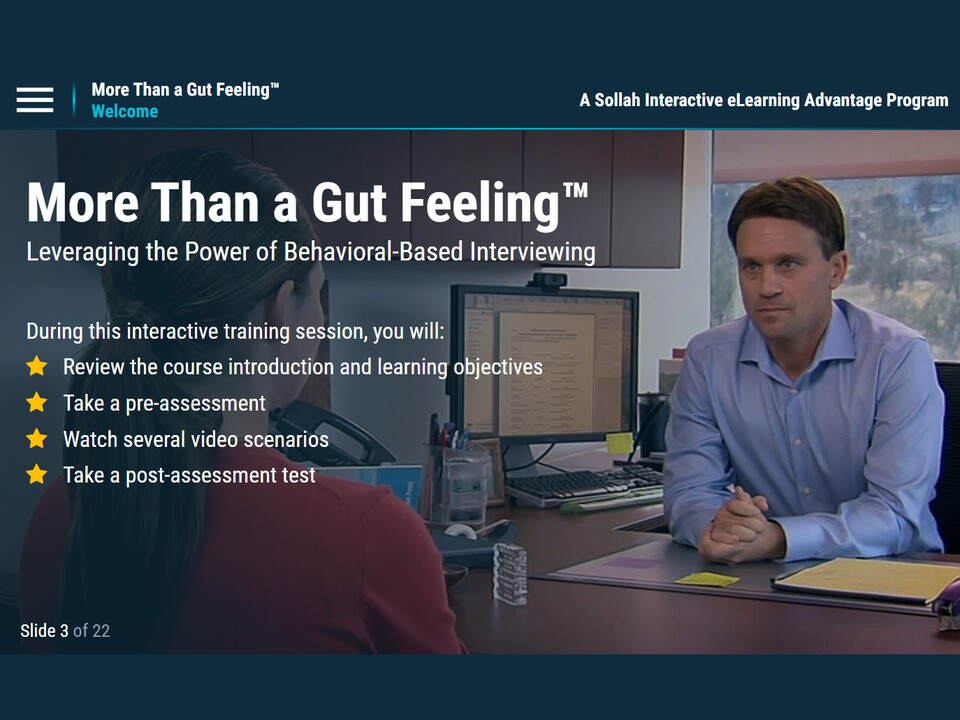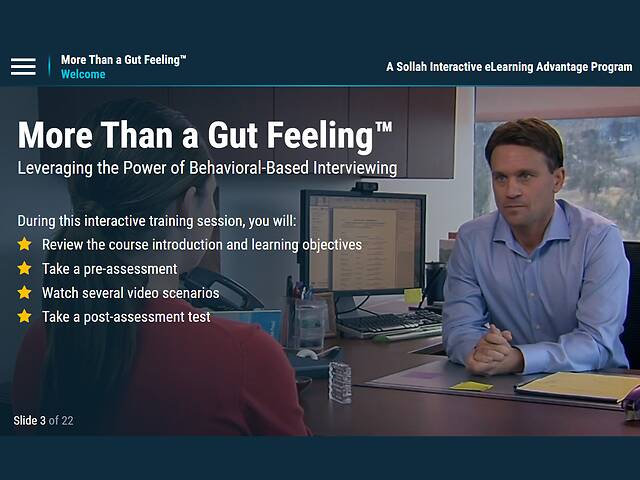Past Behavior is a Reliable Predictor of Future Performance

If you’re like most managers, your greatest need is for a system of interviewing that doesn’t force you to rely on a gut feeling or your intuition. You want a system that enables you to gather the right information and use it to make informed hiring decisions. You want a system that has built-in predictability, so you know that the person you hire will be successful on the job. The More Than a Gut Feeling program and training package will introduce you to the practice of behavior-based interviewing. The concept of behavior-based interviewing is simple: Your interview questions target the candidate’s past job behavior... because past behavior is a reliable predictor of future performance.
The single best predictor of a candidate’s future job performance is his or her past job behavior. How do we know
this is true? Because it’s been proved in thousands of actual job situations for more than two decades. Interviews that probe for past job behavior have been found to be more reliable than ones that focus on personality traits, such as “I’m dependable,” or “I’m hardworking,” or even, “You can count on me.” And hiring decisions based on actual behavior are far more accurate than those based on gut feelings.
What many successful interviewers have found is that the way in which a person handled a specific situation in the past gives you valid information about how that person will approach a similar situation in the future. If a person has worked well with customers in the past, he or she will most likely be effective with customers in the future. If the person has had trouble communicating well in the past, you can predict that he or she will continue to have communication problems in the future. This is the foundation for behavior-based interviewing. Once you understand this concept, you can plan to ask the kinds of questions that will give you the information you need to make good hiring decisions.
The High Cost of Employee Turnover
Employee turnover costs money, and the cost typically is a lot higher than most managers think it is. The cost of turnover includes everything from recruiting costs, the time to screen and interview new candidates, and the time and money to train the new employee to the cost of lost work time while all this is taking place. In some positions, lost work translates into lost business because customers or potential customers go somewhere else while the new employee is on the learning curve of effectively performing the job.
Some companies have identified employee-turnover costs as ranging from 35 percent to as much as 100 percent of the
employee’s annual salary. One organization estimated that it cost them in excess of $10 million annually to recruit, hire, and train more than 500 new manager-trainees. Bottom line: Employee turnover—for whatever reason—is extremely costly!
Obviously, you can’t hope to eliminate employee turnover completely; it’s a fact of modern business life that people change jobs. But you can reduce needless employee turnover—by doing all you can to make certain you hire the right person in the first place.
Interested in giving TrainingFlow™ a whirl? Drop us a line at lmssupport@trainingflow.com. We can answer your questions and give you the help you need to succeed.
Related Course
50 Minutes Level: Intermediate
Based on Best-Selling More Than a Gut Feeling IV! Let’s be honest… a lot of hiring gets done based on nothing other than a gut feeling. Assumptions. Intuition. And a lot of employee turnover results because that gut feeling, that assumption, that intuition just wasn’t very accurate. If you’re like most managers, one of your greatest fears is that you’ll hire the wrong person. You want to hire the person who, ultimately, will be the most successful in the job.
Topic: Interviewing & Hiring

